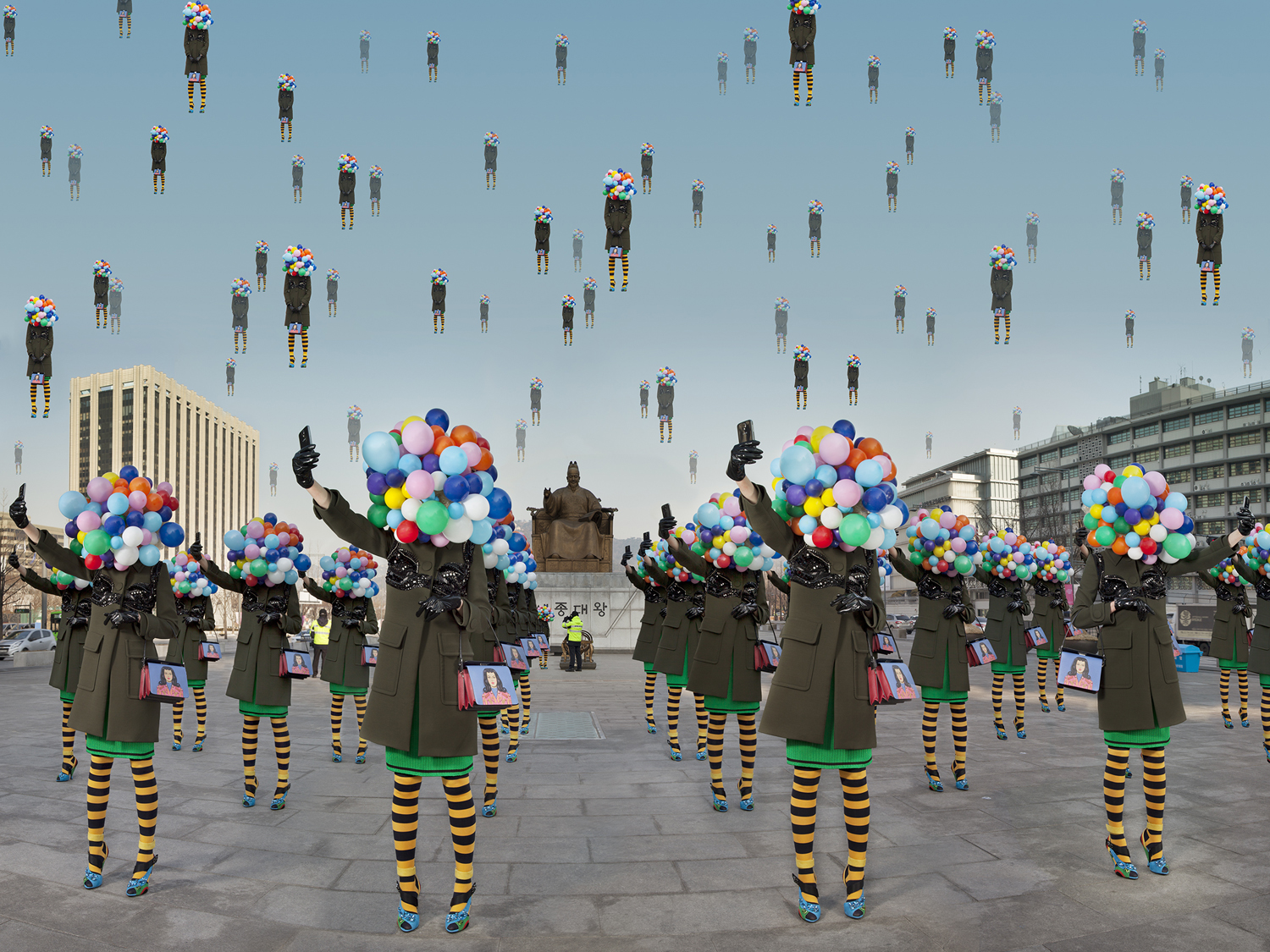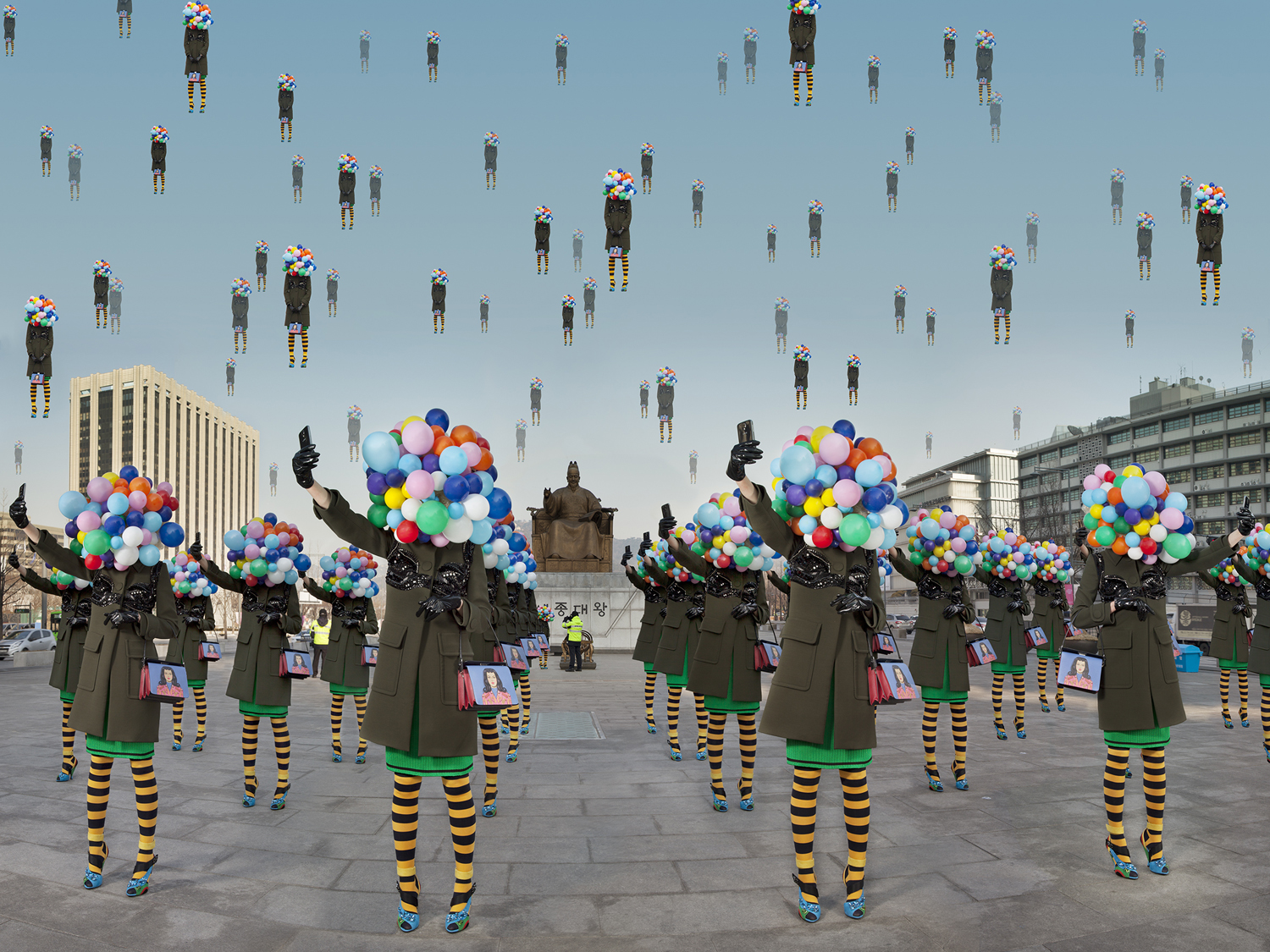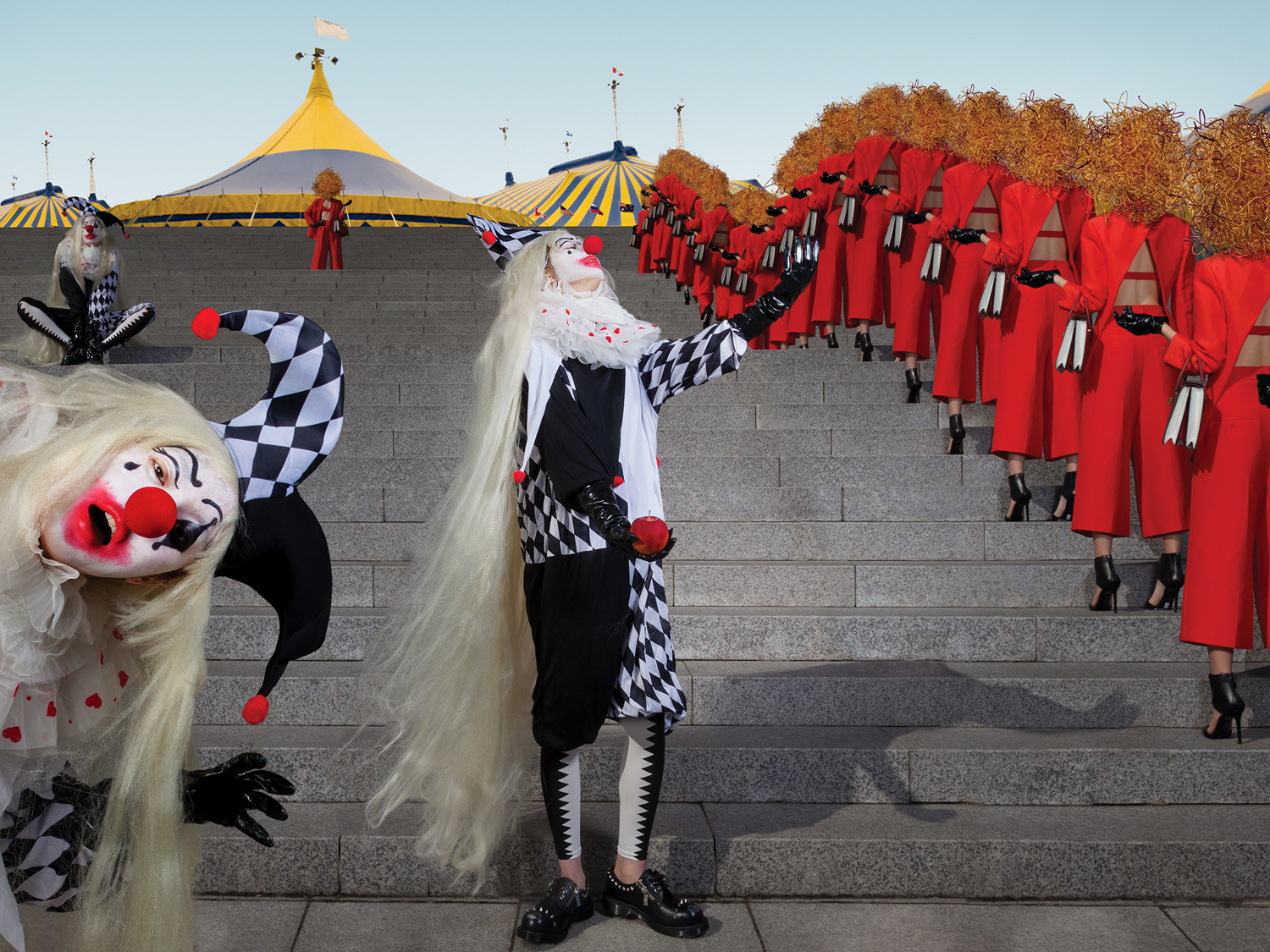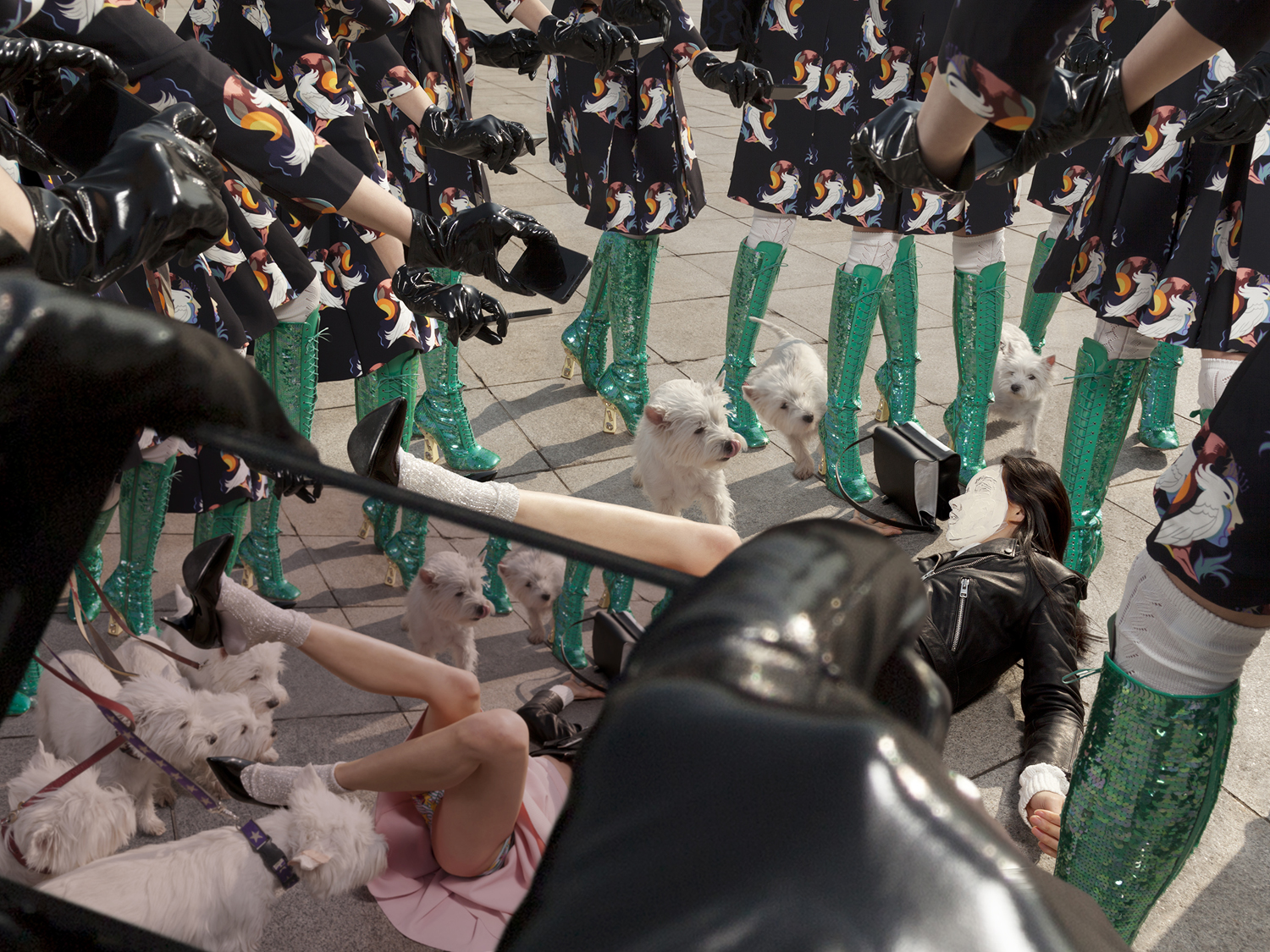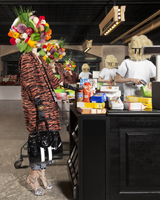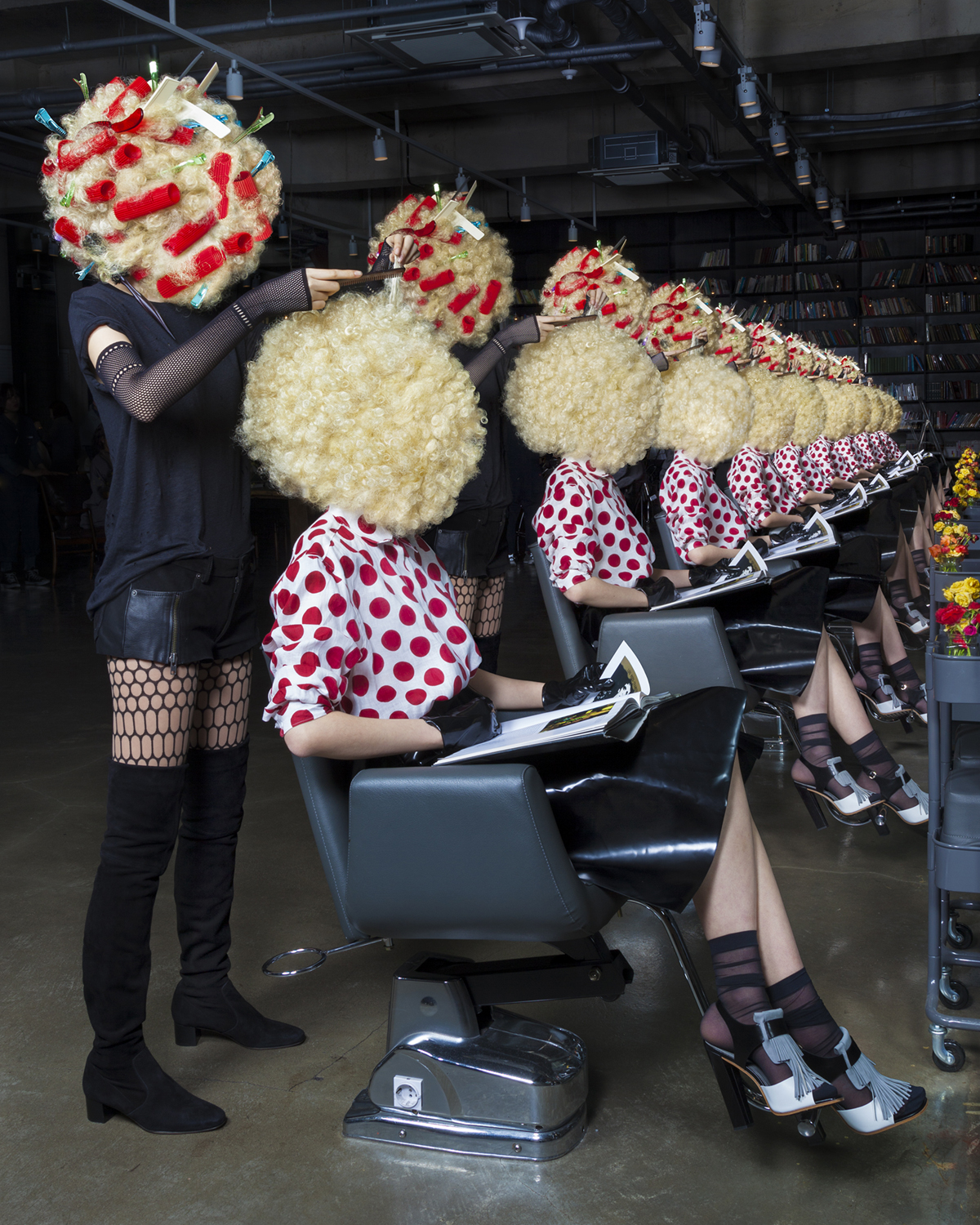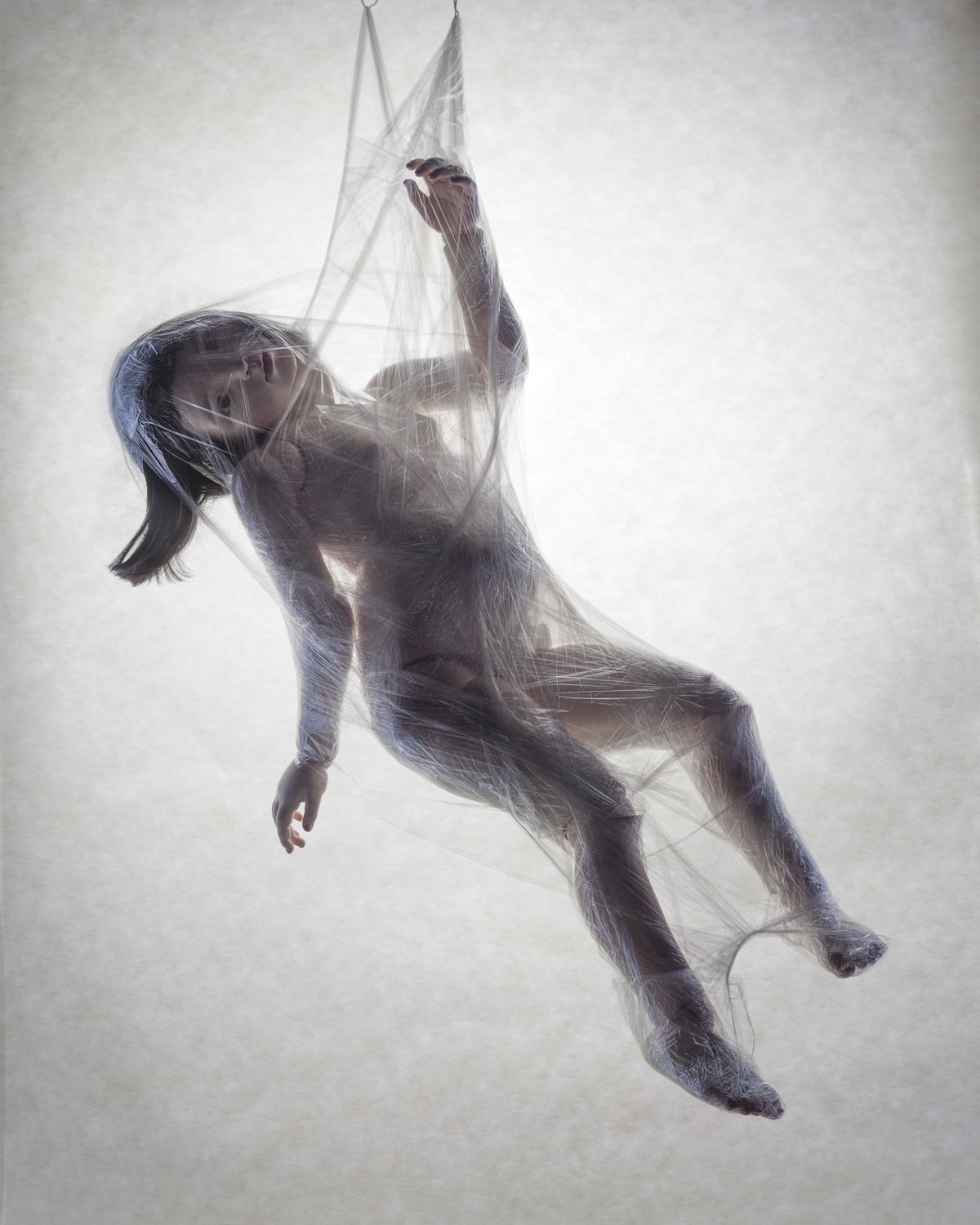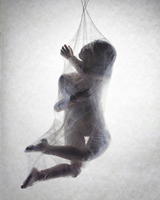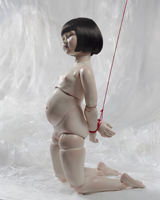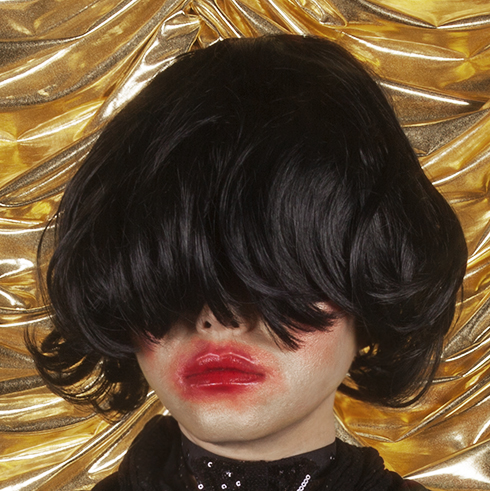
Nanda , The Museum of Photography, Seoul


Birth
1969, Seoul
Genre
Installation, Photography, Media
Homepage
Anxious Celebrations
1.
In her first solo exhibition of 2008, Modern Girls, KyungseongPilgrimage, Nandacaptures a moment of manifestodeclared by infinite numbers of duplicated modern girls, against the backdropof a movie set showing scenery of Seoul from late 19th century, orGyeongseong as it was called back then. Modern girls in the image dance ingroups, weave in and out of streets like secret agents on a mission, or block offthe road as a crowd. These modern girls first appear in 2006 exhibition Pilgrimage. Modern girls from thisproject, shot at a venue depicting the old Cheonggyecheon area, look liketourists who had failed to enter into the world of modernity. The girls arelined up unnaturally like models posing for a photo shoot (Cheonggyecheon, 2006), or are dressed in hanbok, school and workuniforms as well as formal clothes to resemble a musical scene. Modern girlsthen move to today to gather together and take pictures of objects on the tableas if they are startled by photography’s excessive popularization and expansionof personal media (Gourmet Blogger,2007), and celebrate female photographer Diane Arbus at a fabulous party (For Arbus). This photo too shows acamera on the table. It seems photography world shed a spotlight on Nandaprimarily because virtual character of ‘modern girl’ was such an amusingdepiction of women from modern ages. Meanwhile it’s a shame the modern girl is exceedinglydefined as photographer Nanda’s signature. The modern era she focuses on andthe reason she choose to exhibit modern girls who have a new identity representingthis era, are understood only as a feministic insight and reinterpretation ofmodernity. Nanda’s photographs are in fact photography for the eye and at thesame time symbolized photography that needs to be read into. Yet I find onemore factor from her work. It is the overlap of photographic technology as anew culture, and the timely conditions. Let’s consider the possibility thatNanda is not only trying to re-create/re-enact a certain world but iscontemplating on how such media called photography is penetrating into oureveryday world. If so, modern girl can be interpreted as a representation ofindependent women and simultaneously as a metaphor on photographic technology’sreplicative potential that’s a hallmark of modernity. Moreover, it should benoted the movie set in the background too is not just any prop to indicate the timeperiod but rather an artificial city built from a cinematic point of view thathas recreated the now disappeared modern days based on a frame meant formovies. Especially in her recent works modern girls have vanished, to be replacedby mask-wearing models and even documentary photos of some sort have appearedin her exhibition, taking down the interview process. If this is the case,should this series of change interpreted as the artist suddenly abandoningthemes of the past and moving onto a new one? The answer to this question canbe easily obtained if it’s judged only by her style. Nevertheless, it is mybelief that Nanda’s recent works are not disconnected with her past but ratherare closing in on her own questions. This is because the topic she still won’tlet go but is holding on to still lies in photography and culture, photographyand recognition, as well as image and life.
2.
It seems asnon-professional activities in photography become more general, photography islosing more ground it had before. It’s just a contemporary way of living an ageof hobbies where interests instantly mirror cultural phenomenon of the day, assuch professional skills diffuse among the public. Of all the hobbies,photography alone has evolved beyond a common public interest to the point ofexcessiveness. More so than in any other time, image has penetrated into today’sworld to rule over our minds and lives. While image production of the past wasa part of ‘power’, now has come a time to ponder upon value of possession and usefor images. Overflow of images is an aged discourse but despite recent expansionof critical cultural research, image proliferation seems to be out of control. PierreBourdieu had already recognized photography as a tool of sociology. In his bookUn Art Moyen, Bourdieu definesphotography not as a medium of aesthetics but of social recognition employed bythe public. Here photography functions more than as images to document andremember. As an example, in France back in 1960s, guests invited to a weddingwere expected to purchase a wedding photo album made after the ceremony insteadof giving presents. Depending on era and region, the public takes a variety ofstances towards photography. Just 2 decades ago, to show one’s photo album toanother was a part of a bonding process. Today where digital devices havebecome part of our daily lives, photos are consumed and easily trashed asdisposables, rather than being a medium for memory sharing. If albums in thepast were precious objects containing individual’s process of growth, now ithas turned into a reservoir of information that’s constantly modified. Thusgeneralization of photography has lead to the change of attitude towardsphotography. As a sociological tool, photography steers a person’spsychological status and at the same time through photography people attempt torelate with the community one belongs to. Album transforming into a storage unitresults not only in the shift of material to dematerial but also in change ofphoto sharing platform. Sharing an album had been a private experience ofempathy mostly occurring at one’s own house. Moreover, only when it is openedup to a close friend, as the sole space of memory (at least for oneself) despitethe possibility of duplication, will it become a medium of communication.However, photography inside the platform of social networks is an object ofconsumption to share one’s daily events. As image, it multiplies infinitely anddwells where there are no limits to time and space. According to Bourdieu’s views,photographic images can be concluded as ‘habitus that defines class’ regardlessof the era. More than anything, classification is executed according to the attitudeon photography. That is, attitude towards one photographic image materializedifferently depending on various environments and conditions such asprofession, taste, gender, sexual preference, academic background, region,language and economy. However, Bourdieu’s ‘habitus’ is not a closed concept. Habitusis a complex mixture of objective decision and hopes, plans and will for thefuture. For Bourdieu it is a social nature of humans and more of a motive thatleads endless struggle. If so, a souvenir picture must be a documentation of aspecific event and an opportunity to reveal through formality the socialaspiration that had been dormant within. Therefore image of souvenir photographis a place where psychological desire is expressed more directly, separated awayfrom social reality.
3.
Among world offictions, romantic comedies always try to prove fateful love. That is why ascene with fabulous or heart-moving ritual is a must in these sweet movies. Tobe more direct about it, an hour and a half of film running time exists forthis very scene. In the end, movie’s message emphasizes how fateful love can overcomeall disasters and achieve happiness. Rules of romantic comedy openly preachesthat if only a righteous life and a pure mind is kept well, someday a fiction-likelove will find you and you will become the most blessed person on earth.Romantic comedy is an illusion, a fantasy. The public has a right to enjoy orcriticize it, and it’s not such a bad thing to indulge in it, taking a stepaway from reality while watching the movie. The problem is when consumerism furtherprevails, such illusion fails to remain within the domain of cinema or fictionand emerge as reality. Such social phenomenon is found everywhere around theglobe. Jean Baudrillard asserts a consumeristic society produces men’s simpleand common desire for happiness in excess. “Socially and historically, itoriginates from the fact that myth of happiness is an accumulation andspecification of myth on equality in contemporary society.”[1] Mythicizing happiness is more similar to theoverproduced value resulted from the theory of equality, which is a notion ofdemocracy. Humanities scholars from 68-revolution era such as Baudrillard, Michel Foucault, Jacques Derrida,and Gilles Deleuze, tried to unveil the hypocrisy and contradiction hiddeninside capitalism and democracy.
Formalizationof souvenir photo generally demonstrates social attitude on photography. Thatis why souvenir photographs can only obey the social taste and the commonlanguage (parol). Those photos Nanda has chosen exagerrate and leap beyond theformality of a rite of passage that is customary and easily found in today’ssociety ? birthday party, coming-of-age ceremony, wedding, funeral, etc. - and anotherrite of passage that’s undcustomary, foreign and commercialistic ? Valentine’sDay, Pork Day, Halloween, etc. Especially when the age of supercapitalism hasdawned, such mythless ‘special dates’ have increased in numbers and as alreadywell known it is only a promotional tactic by corporates to enhance sales, astrategy to resuscitate the dying economy. What’s interesting is how we allplay along with such fabricated events even thorugh we are already aware of thetruth. Just what is it that’s making us fall for the temptation of shrine builtin midair? As Baudrillard had pointed out, this may be an age where evenhappiness is a commodity. Such happiness seems to become complete by exhibitingthe outter facade instead of innter status. Tourism that came into the worldfrom the web of globalization is in the middle of commercializing the entireplanet while people commemorate every moment of daily life and celebrate itwith invisible friends. The phenomenon is more of a camouflage to hidevulnerability of modern society and anxiety of people living in it.
4.
Nanda’s souvenir photographs visualize the anxiety and notcelebration. The mother who has taken family’s glorious future as her own identityshows her inconsistency through cross next to a paper talisman. Sadisticallyexpressed Valentine’s Day photograph may be sexy but not erotic. It’s just sadto see the only way we manage to show our love is by giving chocolates. Hazardousoverproduction that can only seek ways to promote port consumption despite therisk of foot-and-mouth disease is simply hellish while the man sitting next toa deflated air doll seems to indicate how today’s festive dates are there justto console oneself. Recently I was terrified to see a doll standing in front ofa cellphone shop. The doll, dressed up as a shop assistant would wave its handand bow, busy promoting the shop. Hope and agony of a young entrepreneurwishing for a happy dream are replaced by self-celebration and noise only toshow off one’s goal instead of having some meaning. This, is what Korea societyis today. Once a mechanical technology, photography has turned into a tool torecognize the world and it’s realm has expanded extensively as it stretched itselfto become a methodological media questing after sociological qustions from previouslybeing a media reporting the truth. Interesting part of Nanda’s photograph isthat it originates from the reflection of reality the artist is actualingliving in. Intended kitschness of formation too is not irrelevant to the artist’slife. Second class imagery that are consistently observed from the modern girlsto her recent works are apparently influenced by the environment she experiencedas a young girl, from the family business near Dongdaemun. It seems intendedkitschness too has been refered and reinterpreted under the influence of immediatelife at a comprehensive level. With the help from most advanced technology,recent contemporary photography is becoming massive, almost resemblingmonumental objects, and as part of the globalization it is showing a tendencyof deterriorization through adventures of exotic destinations like that of National Geographics Magazine. Suchphenomenon cannot be blindly criticized yet recently contemporary art is moreoften than not overly imitating materialism or figurative pattern of the west.Undoubtfully virtue of Nanda’s work is in suggesting the ‘now and here’ or theimmediate factors of the same era as dramatic photography procuded withlabor-intensive, handicraft approach instead of documentation.
Hyeon Jeong (Art Critic)






